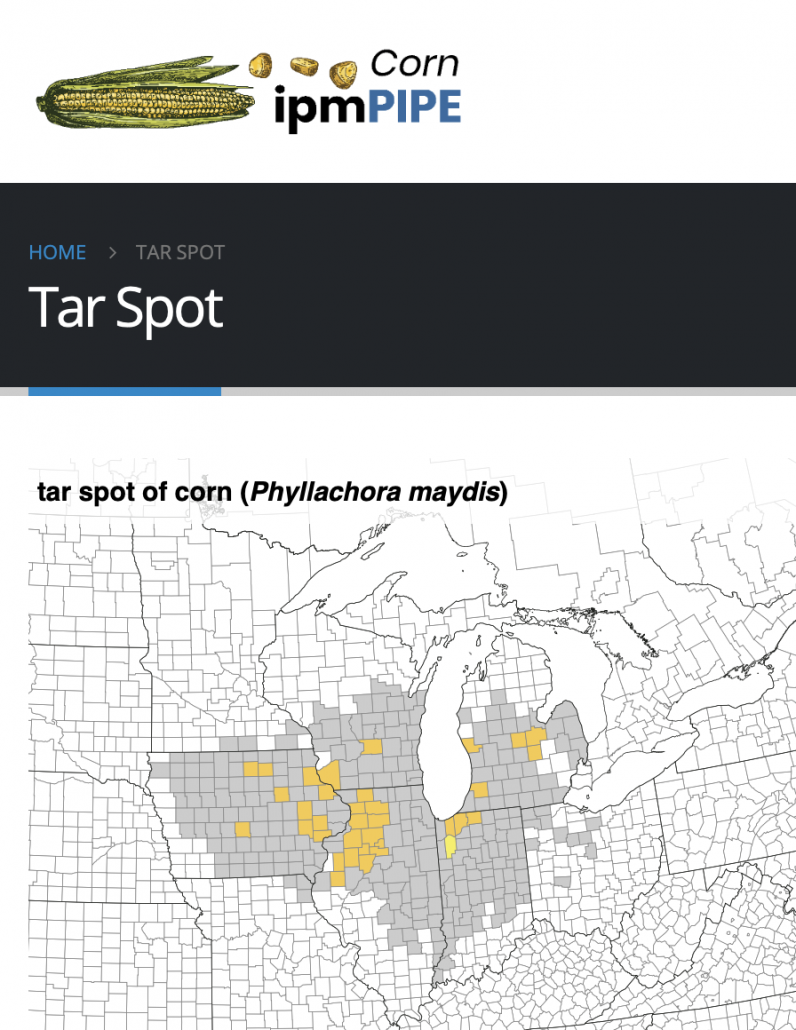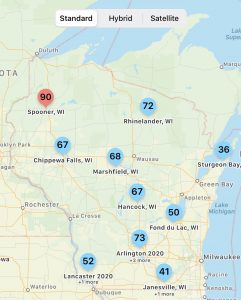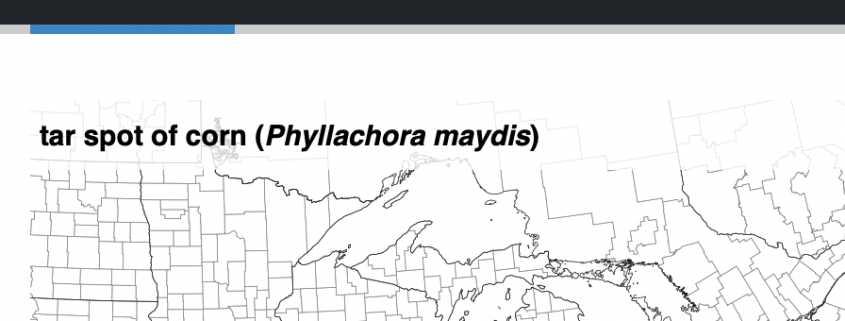Wisconsin Corn Tar Spot Update – July 29, 2020
Damon Smith, Extension Field Crops Pathologist, Department of Plant Pathology, University of Wisconsin-Madison
Roger Schmidt, Nutrient and Pest Management Program, University of Wisconsin-Madison
No new county level first-detects of tar spot in Wisconsin have been added to the national tar spot map this week (Fig. 1). This week we are seeing just a a handful of new counties added in the Midwest corn belt. Note that all county level confirmations for 2020 are in areas where the disease has been previously reported.

Figure 1. Corn IpmPIPE tar spot confirmations for U.S. Counties as of July 29, 2020. Grey shading indicates past confirmation in the county. Orange shading indicates a positive confirmation for 2020. Yellow shading indicates a probable positive.

Figure 2. Tar Spot risk for various locations in Wisconsin for July 29, 2020.
Figure 2 shows the calculated risk from Tarspotter (our smartphone prediction tool for tar spot) for July 29, 2020, for various locations in Wisconsin. The action threshold for high risk is 75% using the updated Tarspotter model for 2020. As you can see, the present risk has continued to decline overall for the entire state with the exception of the far Northwest, where there is not a history of tar spot. Continued dryer and warm weather is less conducive for the development of tar spot, thus we see the risk continuing to decline. So while we can find tar spot in handful of fields, progress of the disease is slow. Remember, tar spot is favored by persistent temperatures between 60 and 70 F and high relative humidity averaging above 75% for a 30-day period, accompanied by extended periods of leaf wetness caused by dew, rain, or irrigation events. The newest Tarspotter tool captures all of these aspects and balances these in the calculations of risk in the map above.
The Recommendation
Tassels and silks have been out in the southern portion of the state. We are now in the tail-end of the window of opportunity for a fungicide application if you feel the risk for disease, including tar spot, is warranted. While tar spot is slow to develop, we have seen gray leaf spot (GLS) developing in the lower canopy and moving up. We continue to also scout for southern rust, but have had no confirmations of this disease so far in Wisconsin.
Do some scouting and check weather reports. If it is dry in your area and has been hot, then no disease may be present. You might be able to hold off on that fungicide application. If it has been humid and rainy and you have some disease present in the lower canopy, then a fungicide application might be warranted. Now is the critical time to pay attention to disease development and make a final fungicide spray decision. See my previous post for more information about making the decision to spray fungicide on corn.
More Tar Spot Information





